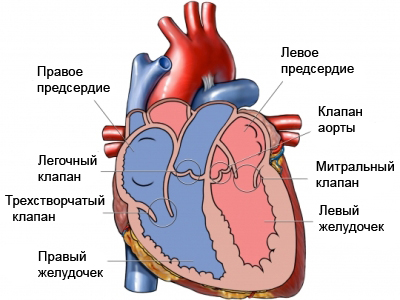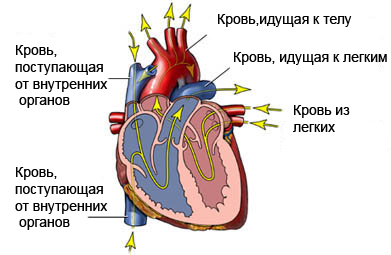Atrioventricular septal defect in a child
Public atrioventricular canal in the child
The heart has four chambers – two atria and two ventricles. Normally the blood flows from the right atrium into the right ventricle, and then into the lungs. Here the blood is saturated with oxygen. Oxygenated blood returns to the left atrium and moves down to the left ventricle, which goes to other organs of the body.
The defect of the atrioventricular (AB) channel is a rare heart defect. In the presence of the disease a large hole in the center of the heart chamber connects all four. Thus all of the blood cells is mixed, which leads to problems of the heart.
Valves, separating the atria from the ventricles, are formed into one large valve. There may also be other violations.


Reasons open atrioventricular canal in the child
The disease is a congenital defect. It means, that a child is born with it. It is not known, why some children develop abnormal heart.
Risk factors
Risk factors for congenital heart defects include:
- Family history of congenital heart disease;
- The presence of certain chromosomal disorders;
- Previous pregnancy with congenital malformations of the heart in the fetus or miscarriage;
- Diseases During Pregnancy, such as:
- Viral infection;
- Diabetes;
- Alcohol consumption;
- Taking certain medications.
Symptoms of open atrioventricular canal in the child
Symptoms may include:
- Hurried breathing;
- Poor appetite;
- Slow growth;
- Bluish skin color;
- Fatigue;
- Irritability;
- Reduced care;
- Breathlessness;
- Swelling of the feet, ankles and feet;
- Sweating;
- Cardiopalmus;
- Sudden weight gain due to fluid accumulation.
This disease can lead to heart failure. If the child has any of these symptoms, you must immediately seek medical help.
Diagnosis open atrioventricular canal in the child
The doctor asks about the symptoms, observed the child, He is studying the medical history and doing a physical exam.
Tests may include the following:
- Heart catheterization – test, that uses a catheter and an X-ray apparatus for measuring cardiac function and perfusion;
- Echocardiogram – test, which uses high-frequency sound waves (ultrasound), to examine the size, shape and motion of the heart.
Treatment of open atrioventricular canal in the child
Treatment involves the following procedures:
Surgery
The operation usually corrects the defect. The goal of surgery is to close the hole. Large valve is divided into two flaps. If the valve can not be repaired, perhaps, will have to do surgery to replace it with an artificial one.
Monitoring of the state
After surgery, a child needs to have regular check-ups at the doctor. The doctor may recommend the following:
- Lifestyle changes, including limiting certain activities;
- Medications to treat symptoms after surgery;
- Taking antibiotics before medical or dental procedures.
Preventing open atrioventricular canal in the child
Atrioventricular canal defects, usually, It can not be prevented. Some assistance can receive appropriate prenatal care.
